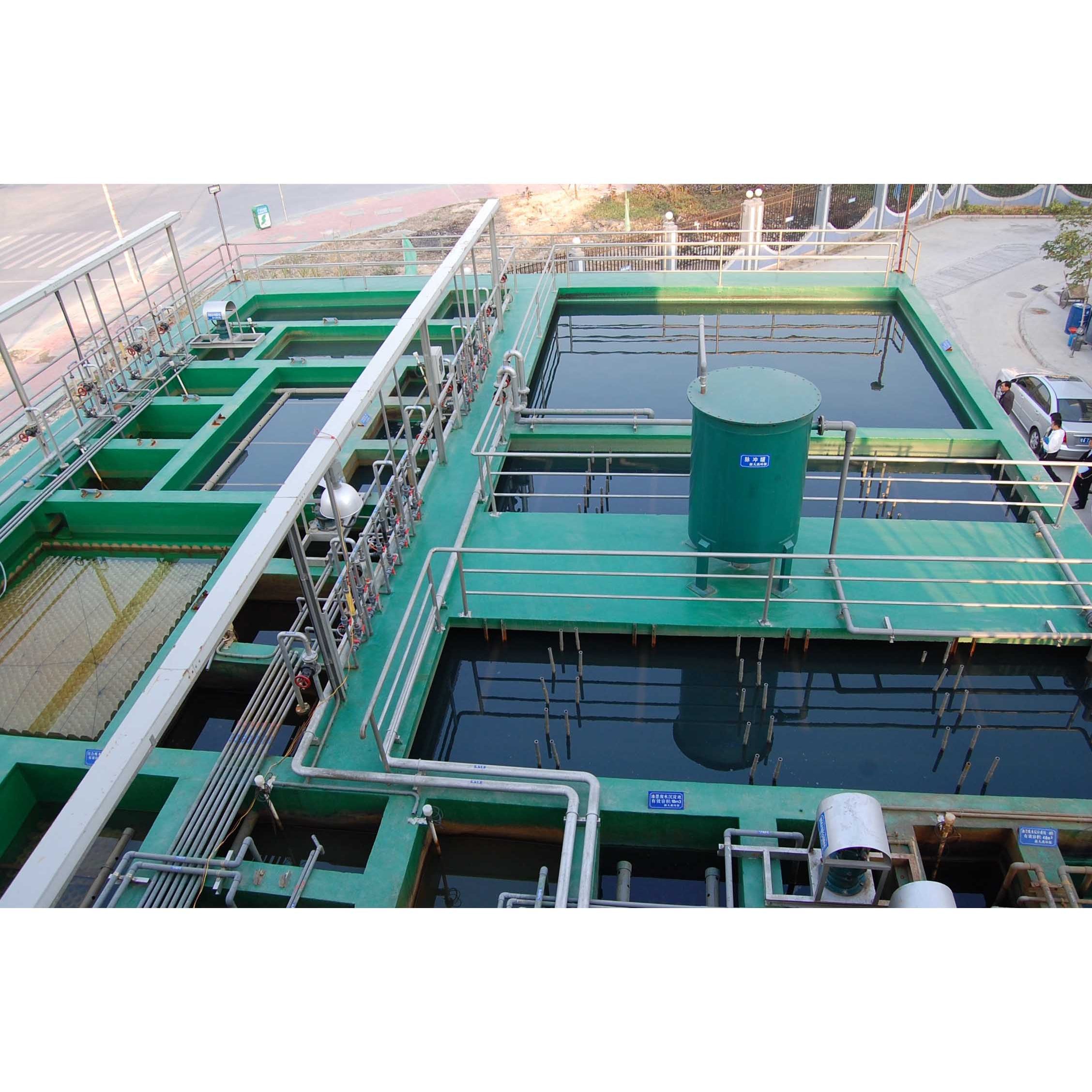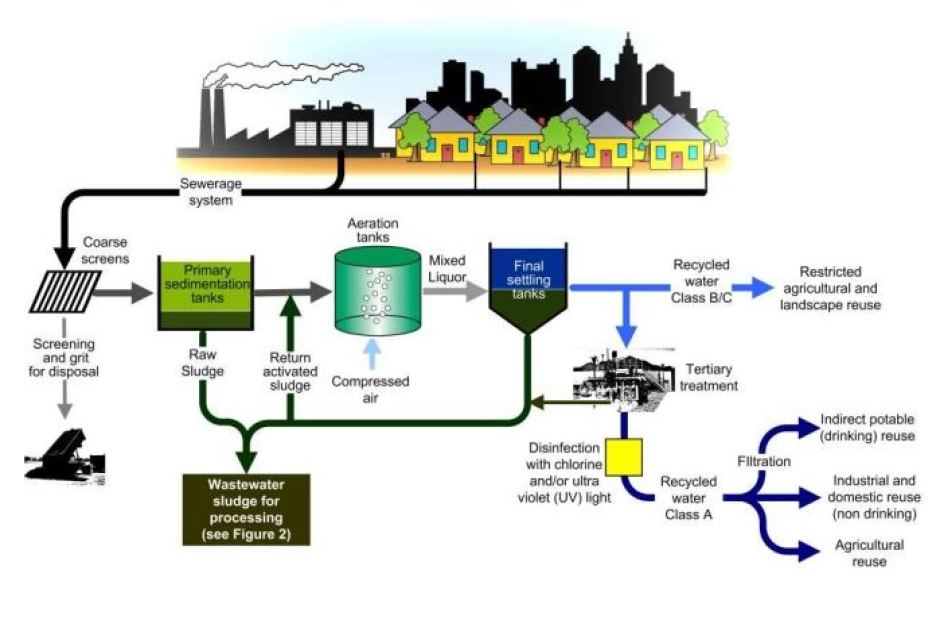Industrial Waste Water Treatment-- Eco-Friendly Solutions for Water Recycling
Industrial Waste Water Treatment-- Eco-Friendly Solutions for Water Recycling
Blog Article
Secret Techniques in Industrial Waste Water Therapy Procedures
The treatment of commercial wastewater is a vital element of environmental monitoring, involving a range of methods developed to alleviate the influence of impurities. From the essential physical methods that divide solids to the sophisticated chemical and organic processes that target certain pollutants, each strategy plays an important duty in accomplishing water top quality requirements. Developments in modern technologies such as membrane filtering and progressed oxidation processes use cutting-edge solutions for improving therapy efficacy. Understanding just how these methods interconnect and their effects for sustainability elevates essential inquiries concerning the future of wastewater management in market.
Physical Treatment Methods
Exactly how successfully can physical treatment techniques deal with the complexities of industrial wastewater? Physical treatment techniques play a pivotal role in the preliminary phases of wastewater monitoring, focusing largely on the elimination of solids and large particulates. Strategies such as purification, flotation, and sedimentation are necessary for lowering the focus of suspended solids, thus enhancing the performance of subsequent treatment procedures.
Sedimentation entails the gravitational settling of solids, enabling the separation of larger materials from the wastewater. This method is specifically reliable in clearing up water prior to organic or chemical therapies. Purification, on the other hand, utilizes different media to capture particle matter, guaranteeing that smaller sized pollutants are removed. This strategy can be tailored to suit different sorts of commercial effluents, producing more clear effluent streams.
In addition, flotation protection approaches, which make use of air bubbles to raise suspended solids to the surface for elimination, work in dealing with wastewater with high concentrations of fats, oils, and oils. In general, physical therapy methods function as an important very first step in the comprehensive administration of industrial wastewater, making certain that the tons on succeeding therapy stages is decreased and enhancing general therapy effectiveness.
Chemical Therapy Techniques
While physical therapy techniques lay the groundwork for reliable wastewater administration, chemical treatment methods are necessary for dealing with the more complicated contaminants usually discovered in industrial effluents. These techniques utilize different chemical agents to precipitate, reduce the effects of, or oxidize harmful materials, guaranteeing an extra extensive elimination of contaminants.
One usual method is coagulation and flocculation, where chemical coagulants such as light weight aluminum sulfate or ferric chloride are included in promote the gathering of suspended bits. This procedure improves solid-liquid splitting up, reducing turbidity and enhancing water top quality. Additionally, neutralization processes are used to adjust the pH of wastewater, utilizing bases or acids to counteract acidic or alkaline streams, respectively.
Oxidation-reduction responses play a critical role in derogatory organic contaminants and virus. Chemical oxidants like hydrogen, chlorine, or ozone peroxide are utilized to break down complicated natural substances, making them much less hazardous or a lot more eco-friendly. Advanced oxidation processes (AOPs) combine multiple oxidation methods to improve contaminant removal effectiveness.
Biological Treatment Processes
The effectiveness of wastewater treatment is considerably enhanced by organic therapy procedures, which harness the all-natural metabolic activities of microorganisms to break down organic matter and remove pollutants. Industrial Waste Water Treatment. These procedures largely entail anaerobic and cardio food digestion, each tailored for you could try here particular sorts of wastewater
Aerobic therapy procedures use oxygen to support microbial development, advertising the failure of natural contaminants into carbon dioxide and water. Usual approaches include activated sludge systems, where oygenation containers help with the mixing of wastewater with microbes, and flowing filters, which motivate biofilm development on media surface areas.
Alternatively, anaerobic treatment procedures take place in the lack of oxygen, making use of anaerobic germs to disintegrate organic matter, resulting in biogas manufacturing, an eco-friendly power resource. Anaerobic digesters are often employed in commercial settings for this objective, successfully reducing the quantity of sludge while creating important biogas.
The option of a biological treatment technique depends upon wastewater characteristics, therapy objectives, and regulatory requirements. The combination of organic procedures in wastewater treatment not only boosts pollutant removal performance yet additionally promotes sustainability by reducing chemical use and sustaining source healing.
Advanced Oxidation Processes

Usual AOP strategies include Fenton's ozonation, photocatalysis, and reagent. Fenton's reagent, a mix of hydrogen peroxide and ferrous iron, militarizes the formation of hydroxyl radicals, making it effective for dealing with wastewater including phenolic compounds and various other stubborn substances.
AOPs supply a number of advantages, consisting of lowered sludge manufacturing and the capacity to treat wastewater with high concentrations of organic toxins. The application of AOPs calls for cautious factor to consider of operational specifications and cost-effectiveness, making sure that these sophisticated strategies are properly integrated right into existing wastewater treatment systems.
Membrane Purification Technologies

Microfiltration works for removing put on hold germs and solids, while ultrafiltration targets smaller natural molecules and infections. Nanofiltration links the space in between ultrafiltration and reverse osmosis, efficiently getting rid of divalent ions and natural substances. Reverse osmosis offers the greatest degree of filtration, made use of mainly for desalination and eliminating mono-valent ions.
Membrane layer modern technologies supply numerous advantages, including low energy consumption compared to conventional treatment approaches, modular design for scalability, and the potential for water recovery and reuse. Obstacles such as membrane layer fouling and the requirement for routine maintenance should be addressed to ensure system efficacy. On the whole, membrane layer purification innovations represent an important component of modern commercial wastewater treatment techniques, promoting sustainability and source preservation in water administration.
Conclusion
To conclude, commercial wastewater treatment employs a varied variety of methods, including physical, chemical, organic, and advanced methods. Each strategy plays a crucial role in effectively resolving numerous impurities, enhancing water top quality, and promoting my review here source sustainability. The combination of these techniques cultivates a detailed therapy approach, guaranteeing that industrial effluents satisfy regulatory criteria while reducing ecological effect. Proceeded developments in these methodologies will certainly further enhance the efficiency and efficiency of wastewater treatment processes in commercial settings.
The therapy of industrial wastewater is a critical aspect of ecological monitoring, involving a variety of strategies developed to alleviate the influence of contaminants.Just how successfully can physical therapy methods deal with the complexities of commercial wastewater?Advanced oxidation procedures (AOPs) represent a cutting-edge i thought about this technique in commercial wastewater therapy, designed to efficiently break down natural toxins that are often resistant to traditional treatment techniques (Industrial Waste Water Treatment).In final thought, commercial wastewater therapy utilizes a varied variety of strategies, consisting of physical, chemical, organic, and progressed techniques. Proceeded improvements in these techniques will certainly better boost the performance and performance of wastewater therapy procedures in commercial setups
Report this page